Rehabilitation Exercises for a Sprained Ankle
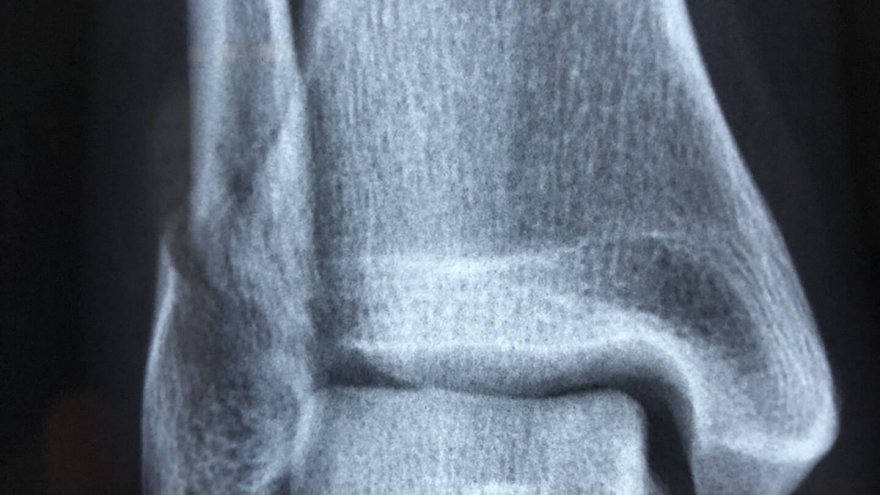
Have you experienced twisting your ankle? Maybe it was on a trail run or running over a pothole. Maybe you were just stepping off a curb to cross the street or stepping on one of your child’s toys that you repeatedly asked him or her to pick up. With it being wedding season, maybe you had a glass or two of champagne and ended up dancing the night away last weekend while wearing 6 inch high heels and oops, you are all of a sudden on the ground. Could that have something to do with it? All jokes aside, there is no need to be embarrassed, tumbles and spills happen to the best of us and hopefully there is a pretty cool story associated with it. However, unfortunately, having a twisted ankle is never a fun time. In fact, in the healthcare field one may hear that it is almost better to break a bone rather than sprain something because the healing time can be complicated, long, and the risk of re-injury may be higher.
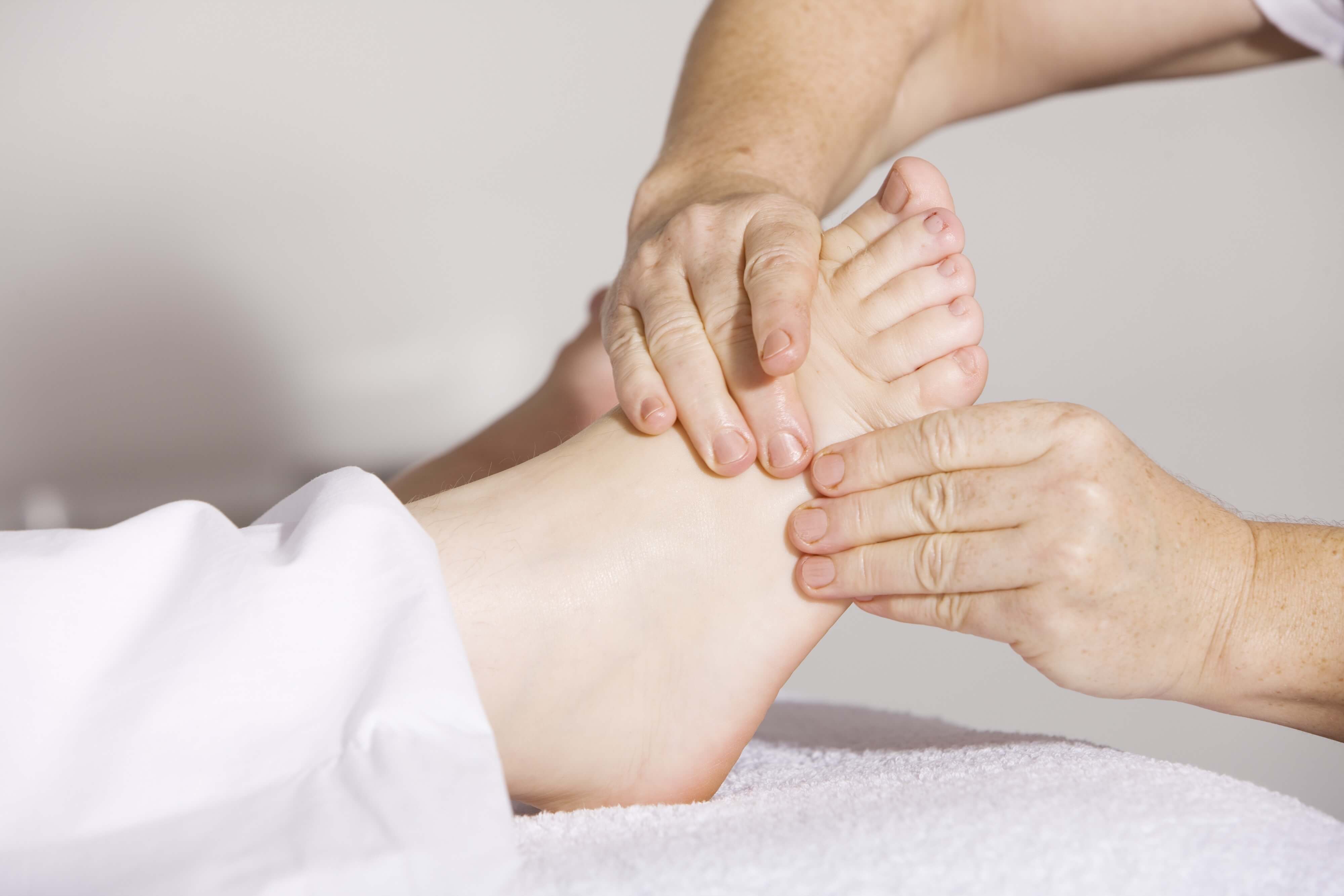
What is a sprain?
There are pieces of connective tissue called ligaments that attach bone to bone to help keep each joint, like the ankle, stable. If one of these ligaments happens to be over stretched, typically by force, the ligament is then susceptible to tearing. This damage is called a sprain. Sprains can have different levels of severity, but each stage usually presents with pain, swelling, bruising, lack of motion, and instability. You can have one or all the symptoms but any of these can make it very difficult to walk, let alone run. In the early phases, one may need to be fitted for an aircast to alleviate pain and help reduce swelling. RICE (rest, ice, compression, elevation) and physical therapy will often be recommended as a conservative form of treatment initially. Even seeing a massage therapist for some effleurage massage will help in swelling and bruising reduction. But thankfully, there are also a few rehabilitation exercises you can try at home to help accelerate healing and return to sport.
*Before trying any exercise program, it is always advised to seek out the attention of a healthcare professional such as a physical therapist to advise on your individual injury.
Rehabilitation Exercises for Ankle Sprains
Isometric Holds
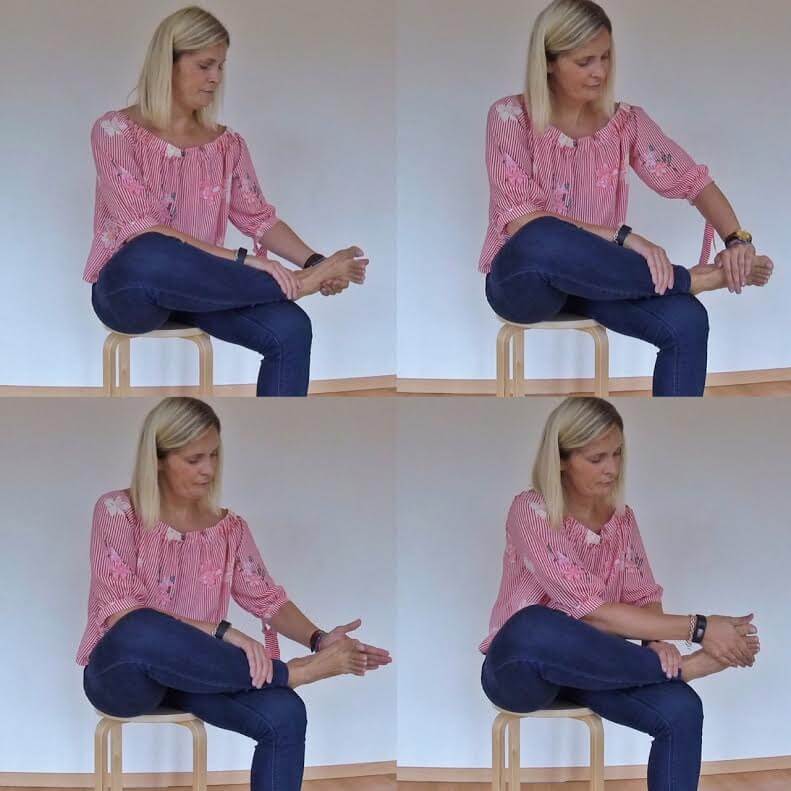
If the foot is too painful to move or bear weight, you can still train the surrounding muscles. Isometrics are a great way to fire muscles without movement while still providing neuromuscular feedback to the brain. An additional benefit of these types of contractions help pump swelling out of the area.
To perform:
Place affected leg on opposite knee. With your hand, place on the outside edge of the foot. Lightly push the foot into the hand while the hand resists the effort, keeping the foot stable and in place without movement while still contracting the tissues. Hold for 5 seconds and repeat 10 times. Then switch the hand for the same concept to the inside, bottom, and top of foot.
Passive Range of Motion
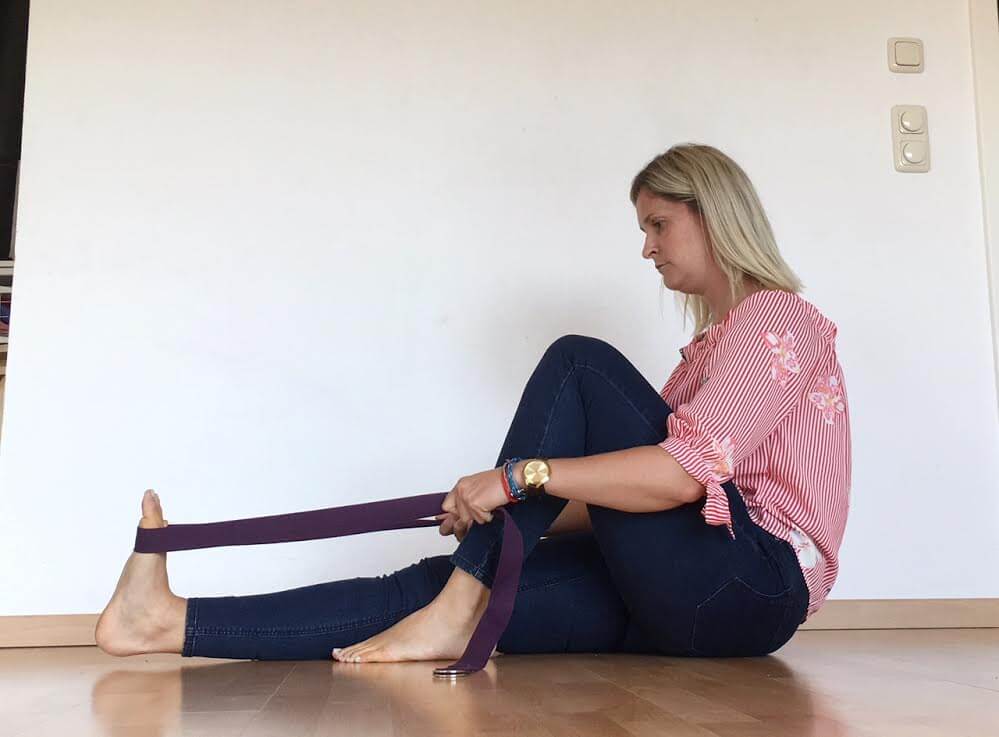
Passive range of motion simply means moving a joint by hand, accessory or even another person. This is done early to help with decreasing swelling, reducing contractures, and maintaining flexibility.
To Perform:
Grab a towel or strap and place it along the inside of your affected foot. Sit with legs long and lightly pull the strap towards you while feeling a slight stretch behind the back of the leg along the calf. Hold for 30 seconds doing 3 repetitions a couple times of day.
Active Range of Motion
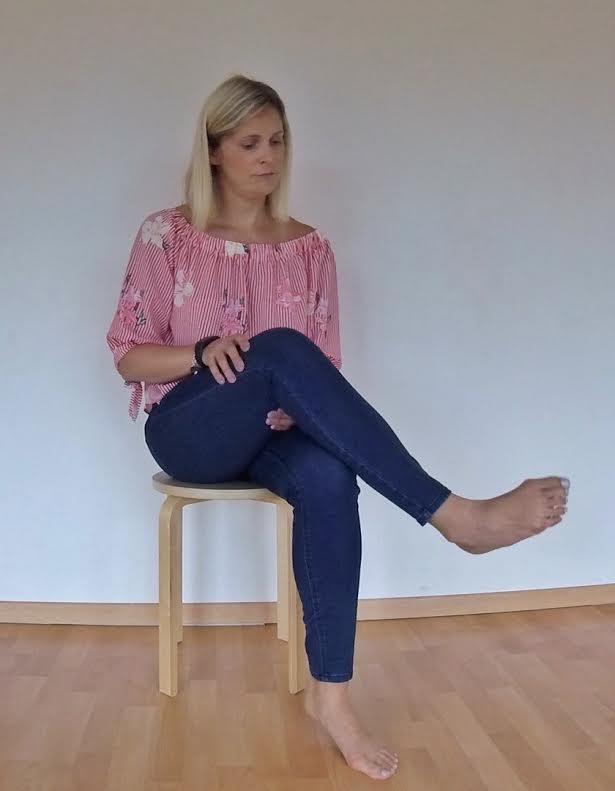
Active range of motion is you performing the motion with active thought and firing. The ankle has several planes of mobility so the easiest way to target all motions is to perform something called ABCs.
To Perform:
Sit in a chair and cross the affected leg over the other. With just moving the ankle, imagine your big toe is a marker and you are drawing capital letters of the alphabet on a board. Go through the entire alphabet A to Z and perform morning and night.
Progressive Resistive Exercises (PREs)
Progressive Resistive Exercises are strengthening exercises using resistance, body weight, or additional free weights. All should be performed in pain-free motion.
To perform:
Eversion – sit with legs long and use a light to medium tension resistance band. Loop one end around affected foot while placing the free end on the other foot and hold to create tension on the band. With the toes upward, turn the foot out without rotating hip or knee. Try up to 3 sets of 10.
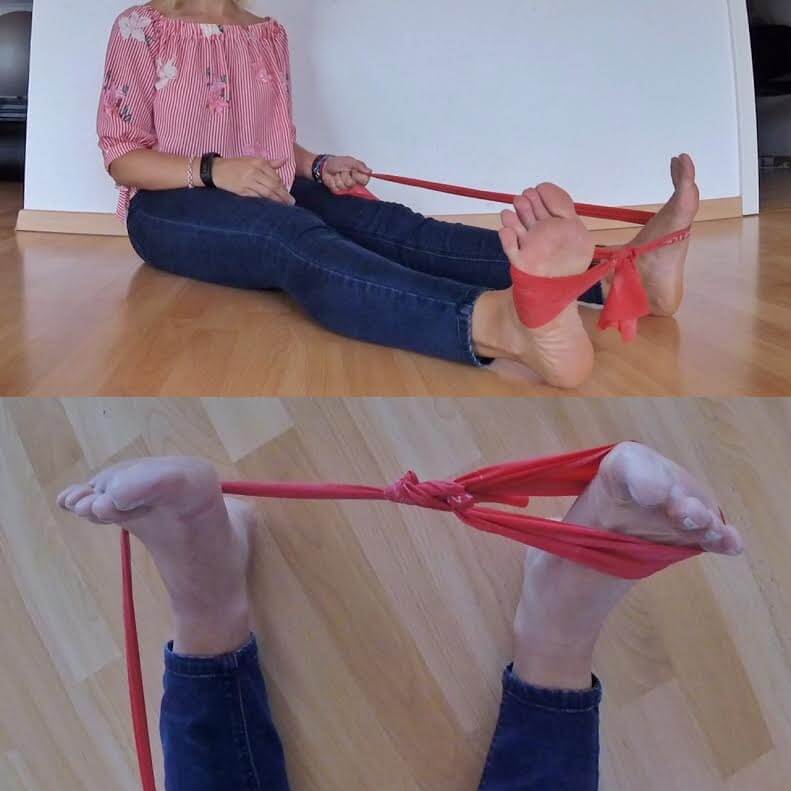
Inversion – with the band still looped, sit with legs long and cross the affected leg on top of the other leg. Wrap the free end of the resistance band on the inside of the unaffected foot and hold the end of the band to create tension. Turn the affected foot in against the tension trying not the let the knee or hip twist. Try for up to 3 sets of 10.
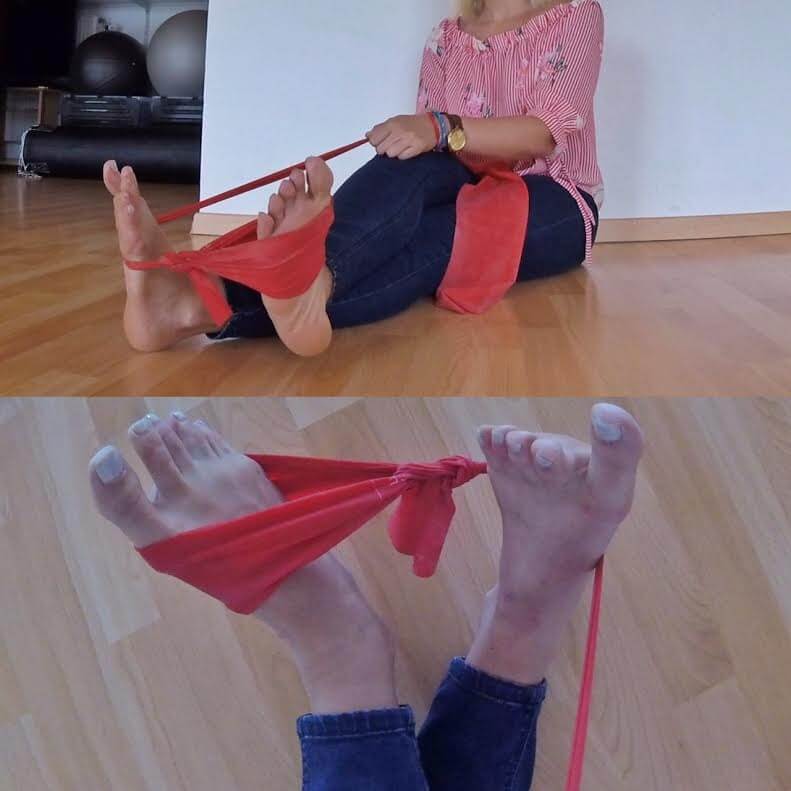
Dorsiflexion – with the loop still wrapped around the affected foot, attach the free end to something sturdy. With a straight leg, pull the foot up towards you against the tension. Try for up to 3 sets of 10.
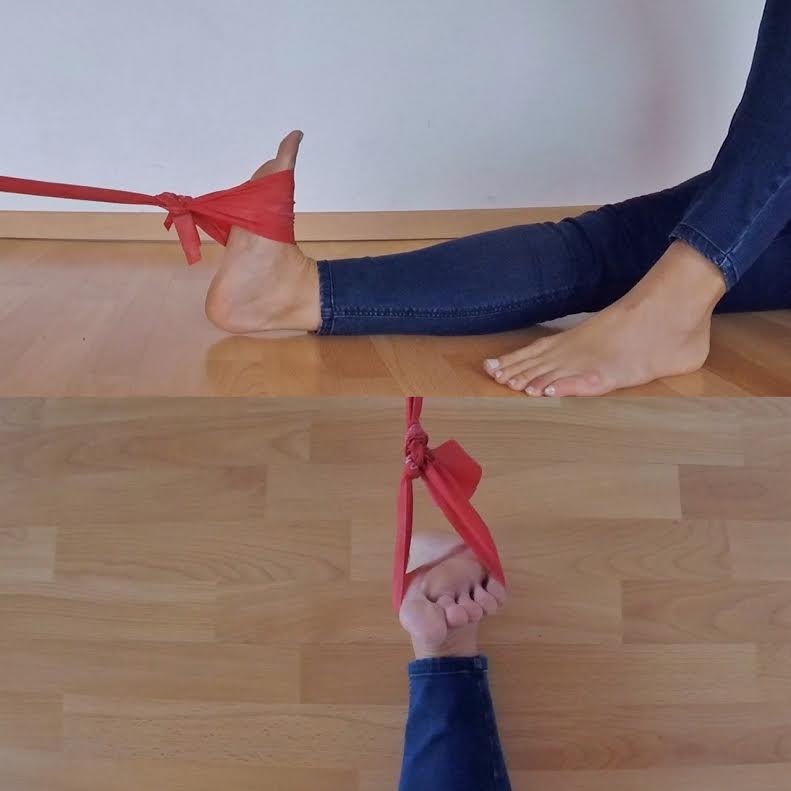
Plantarflexion – with the band still looped around the affected foot, hold the free end and push the foot down away from the tension. Try for up to 3 sets of 10.
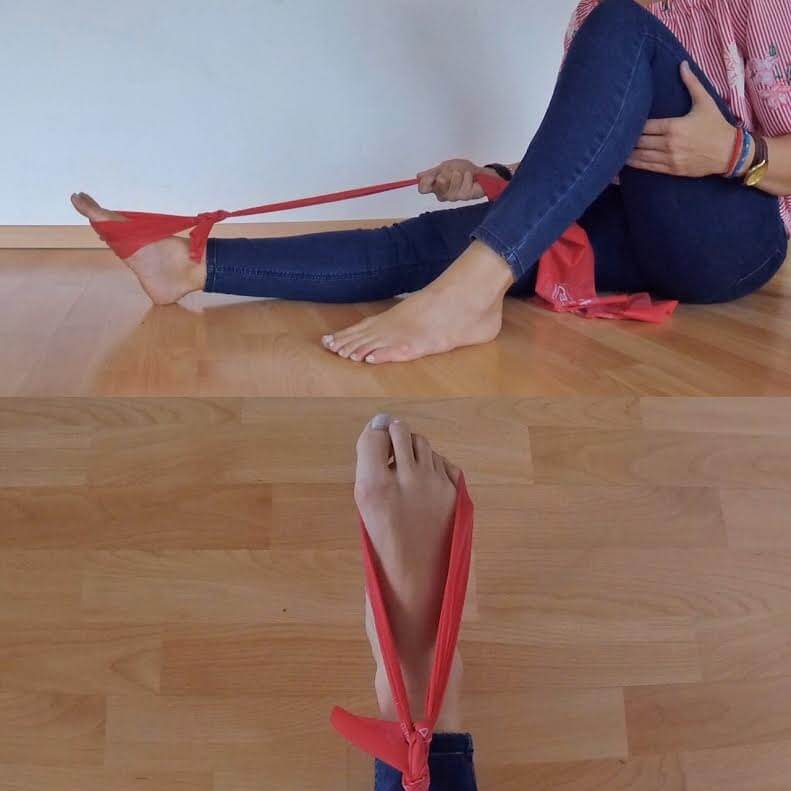
Closed Kinetic Chain Exercises (CKC)
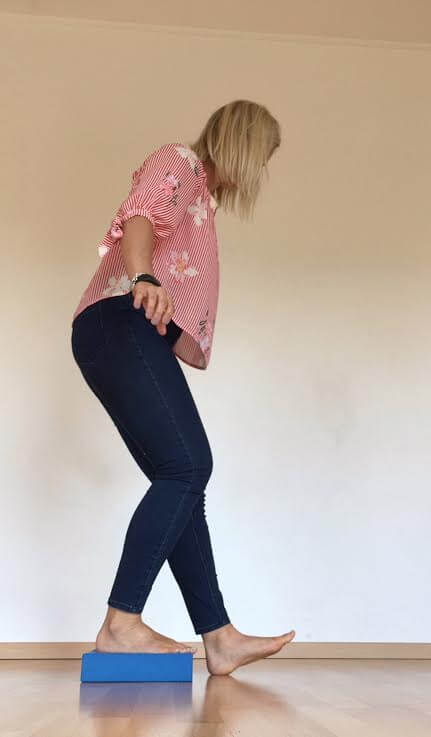
Closed chain exercises refers to the fact that the foot is in connection to the ground, creating stress and activation across multiple joints. These exercises serve to improve weight bearing and function.
To Perform:
Find a small step, place the affected leg on the step. Try to slowly lower the unaffected leg to the floor as if stepping down but do not. Instead, use the strength of the affected leg to return back to the step. Try for up to 3 sets of 10.
Single Leg Balance into Dynamic Balance
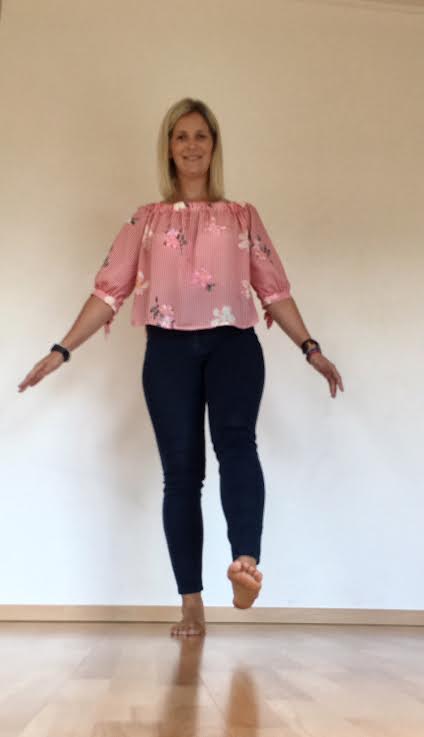
Balance is the most critical piece when rehabilitating from a sprain due to the fact that our ligaments host our proprioceptors, which are the neural input to our brain telling us where our body is in space. When a ligament is damaged, so are our proprioceptors. Balance will help to stimulate them.
To Perform:
Simply stand on the affected foot, trying not to hold on to anything. Hold for up to 30 seconds for 3 reps. To challenge yourself, close your eyes or stand on an uneven surface like a pillow or Airex pad.
Plyometric & Agility Progression with intention for Return to Sport
Here is where it is incredibly beneficial to work with a trained professional to create a program to get you back to your specific sport. Plyometrics are exercises that include powerful, explosive movements like jumping while agility works on speed and reaction time. A physical therapist can assess your return to sport with special tests to help reduce re-injury in the future.
Latest Articles
 Is Running on a Treadmill Easier Than Running Outside?Runners have their own preferences, whether it is treadmill running, running outside on the road, or exploring trails. So...
Is Running on a Treadmill Easier Than Running Outside?Runners have their own preferences, whether it is treadmill running, running outside on the road, or exploring trails. So... Is It OK to Use Trail Running Shoes on the Road?While trail running shoes can be used on roads, especially in situations where a runner encounters mixed terrains or pref...
Is It OK to Use Trail Running Shoes on the Road?While trail running shoes can be used on roads, especially in situations where a runner encounters mixed terrains or pref... How to Fix Sore Quads After Running?Rest, ice, gentle stretching, and over-the-counter pain relievers can help soothe sore quads after running. Also, ensure ...
How to Fix Sore Quads After Running?Rest, ice, gentle stretching, and over-the-counter pain relievers can help soothe sore quads after running. Also, ensure ... 10 Fruits With The Most Electrolytes to Replace Sports DrinksThese fruits are high in electrolytes such as potassium, magnesium, and calcium, essential for hydration, muscle function...
10 Fruits With The Most Electrolytes to Replace Sports DrinksThese fruits are high in electrolytes such as potassium, magnesium, and calcium, essential for hydration, muscle function...

